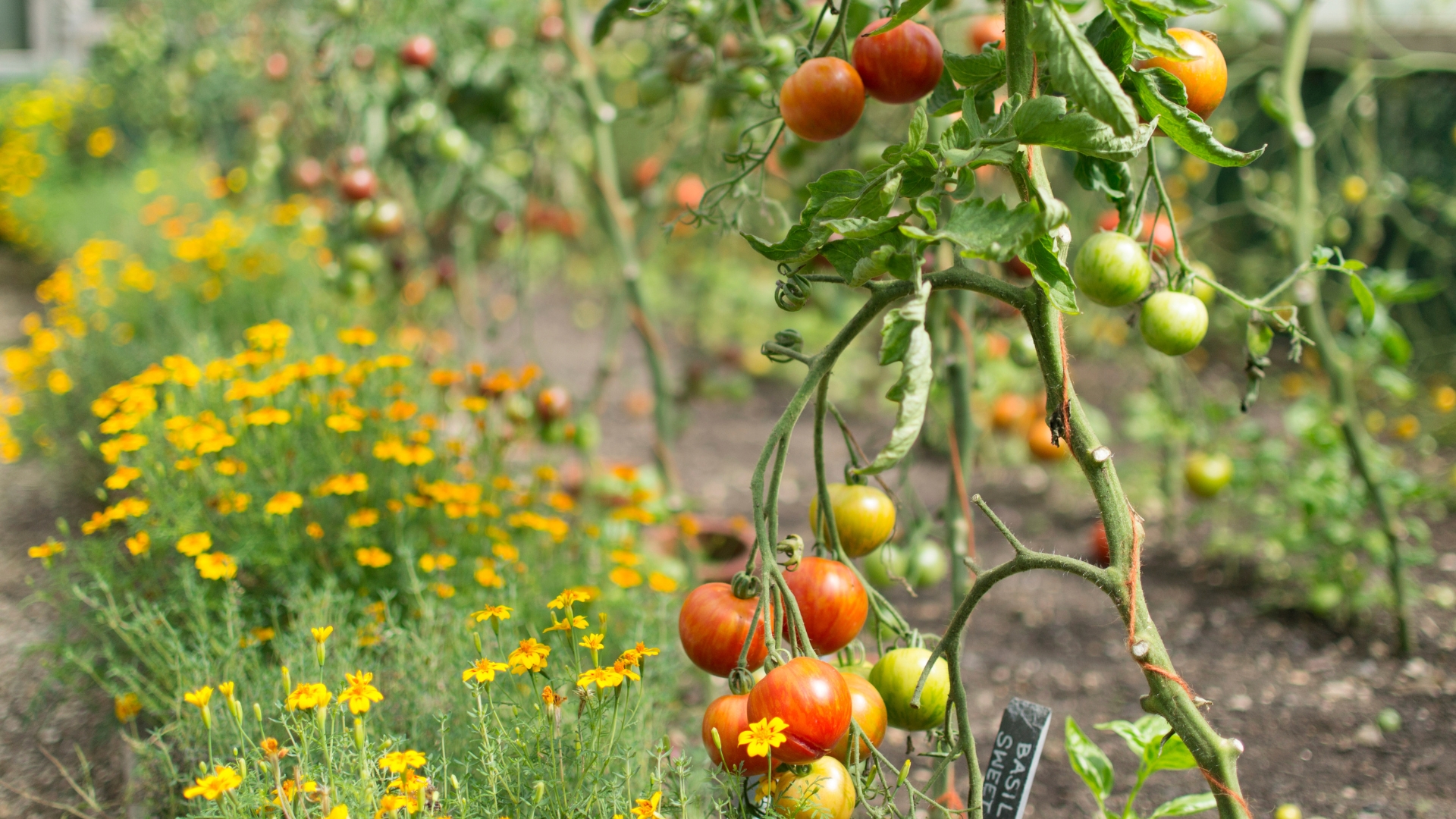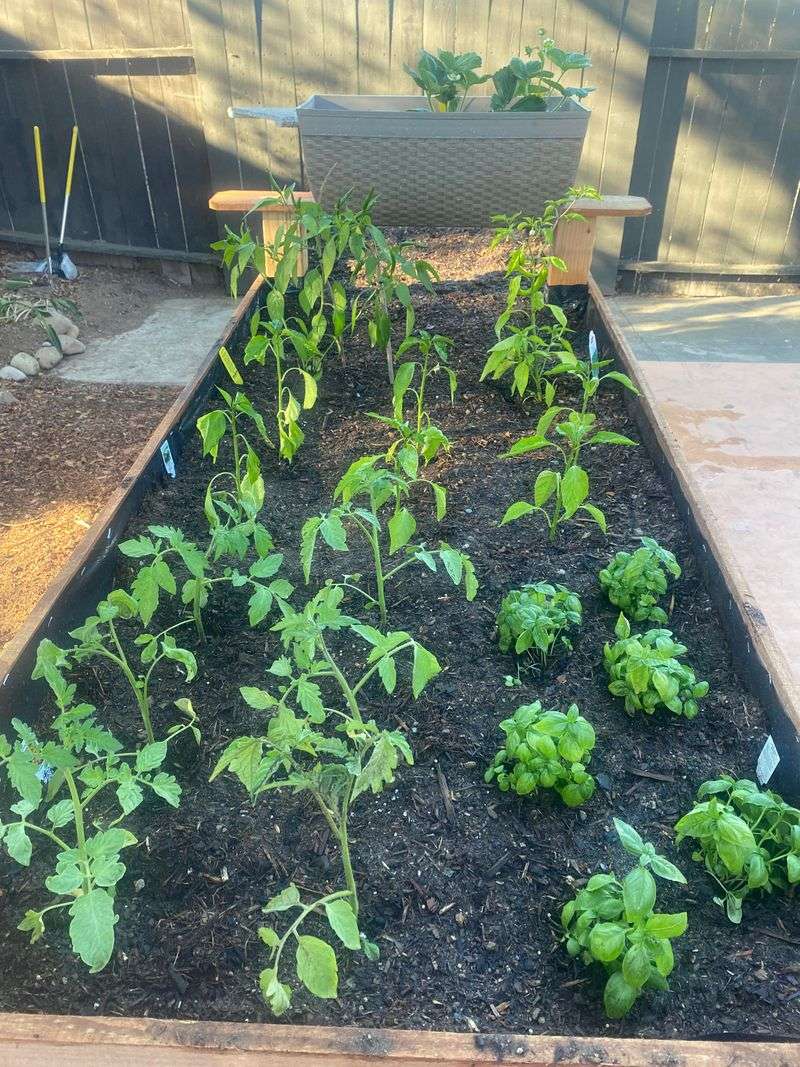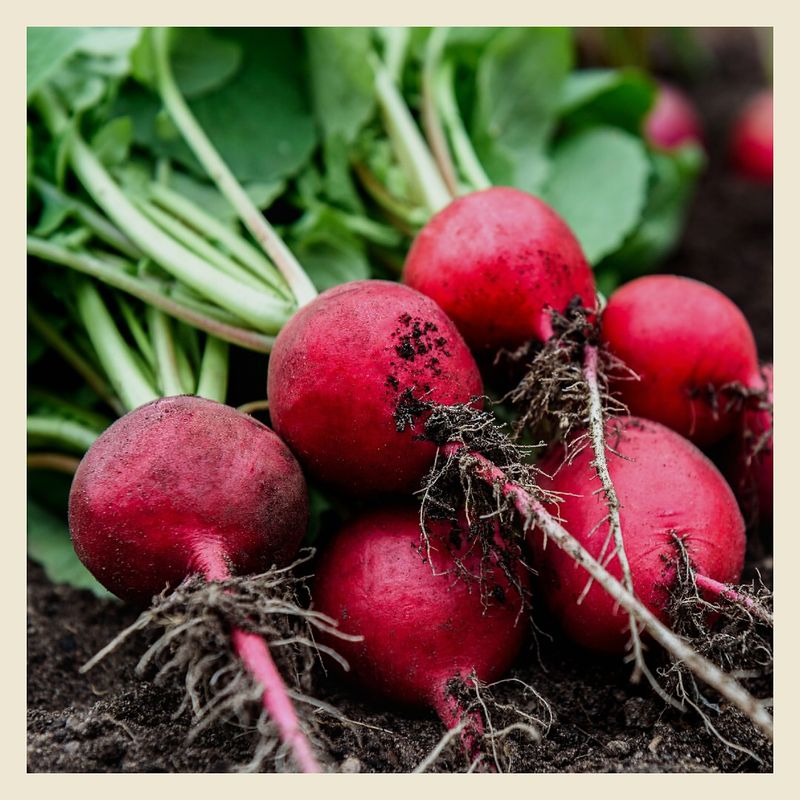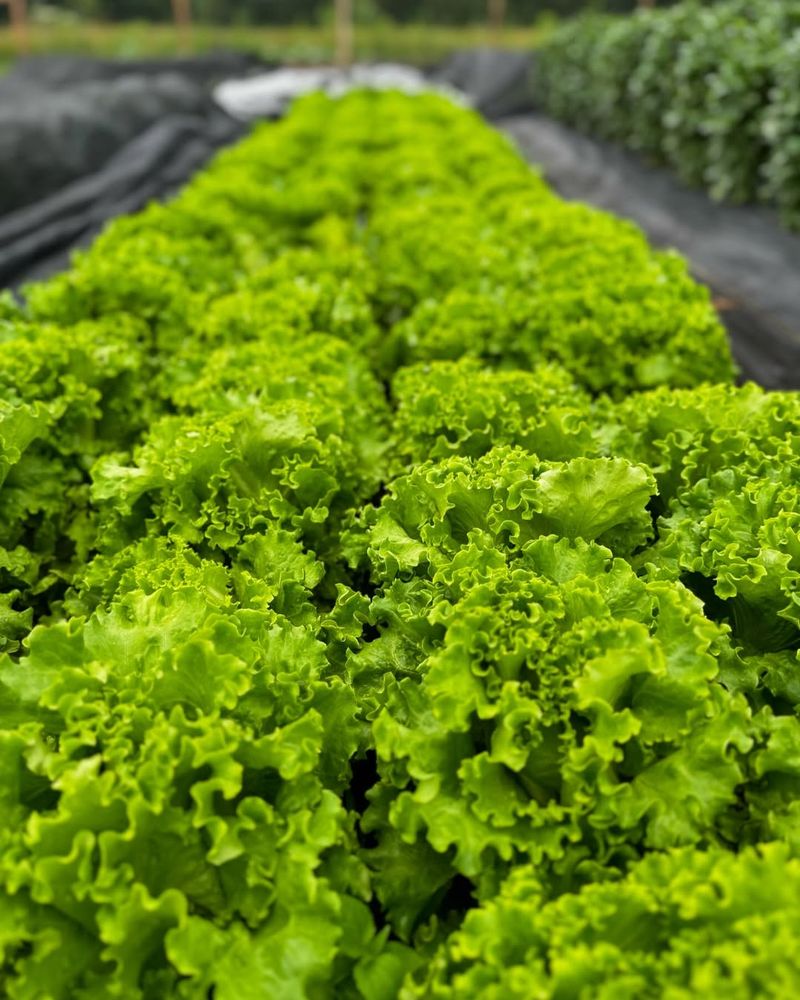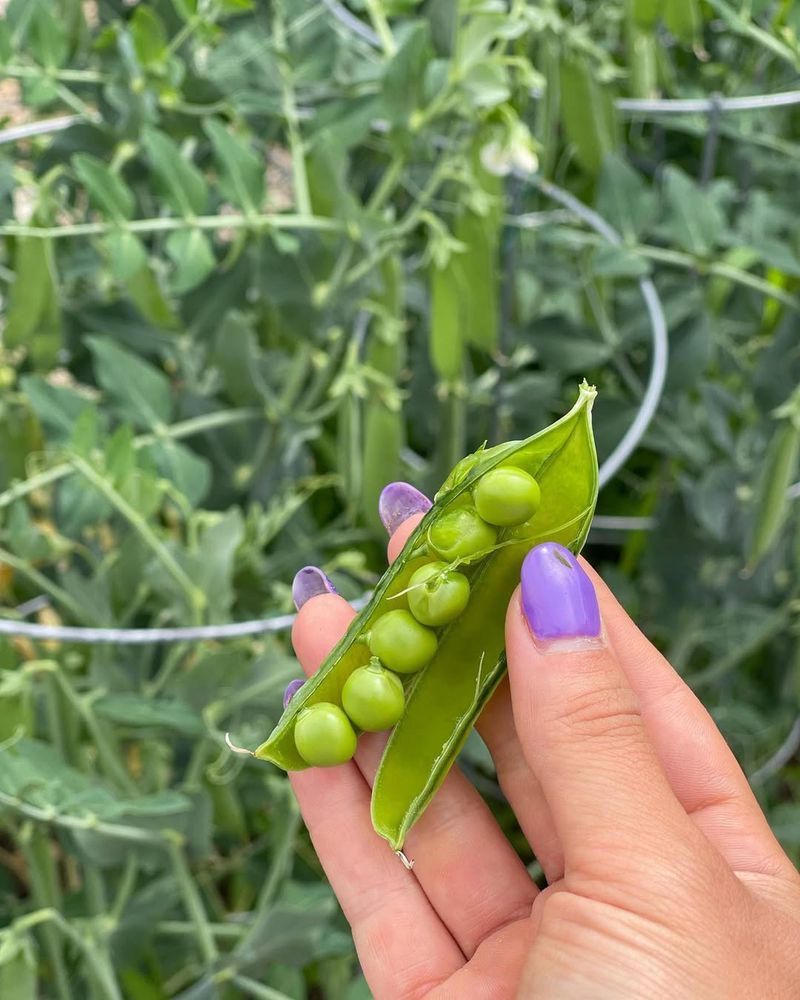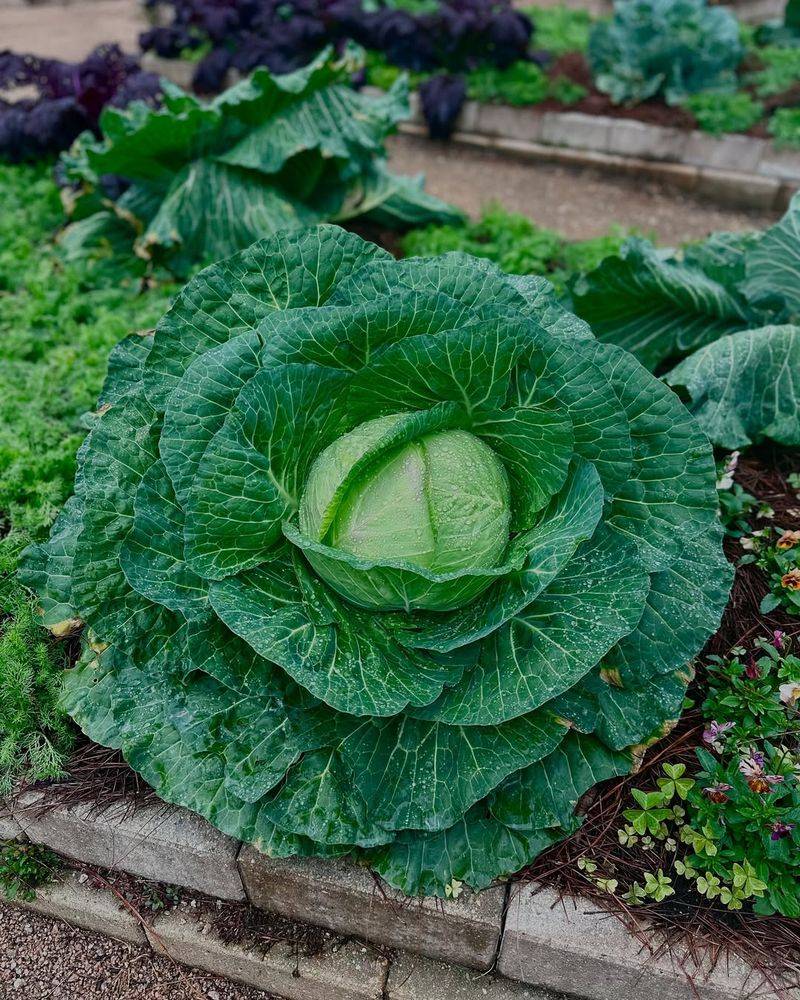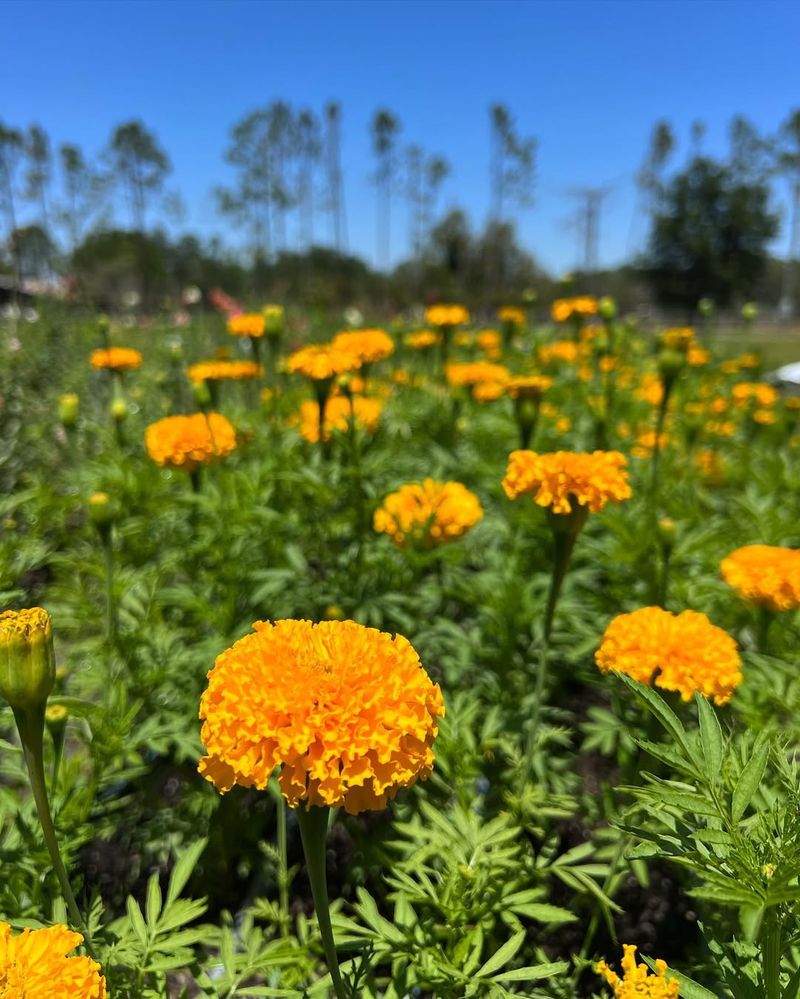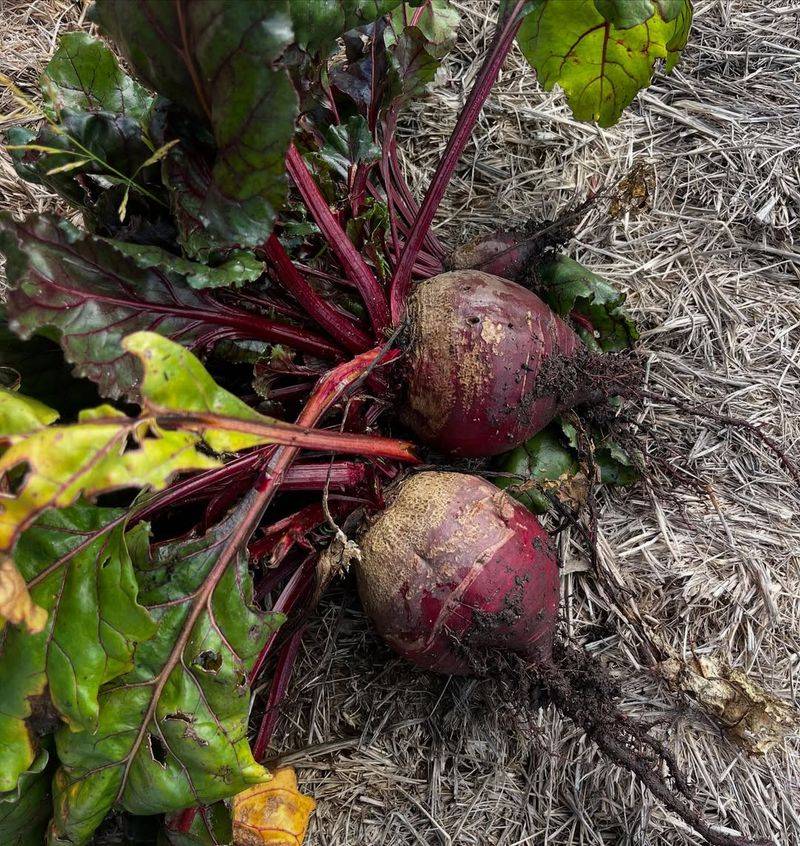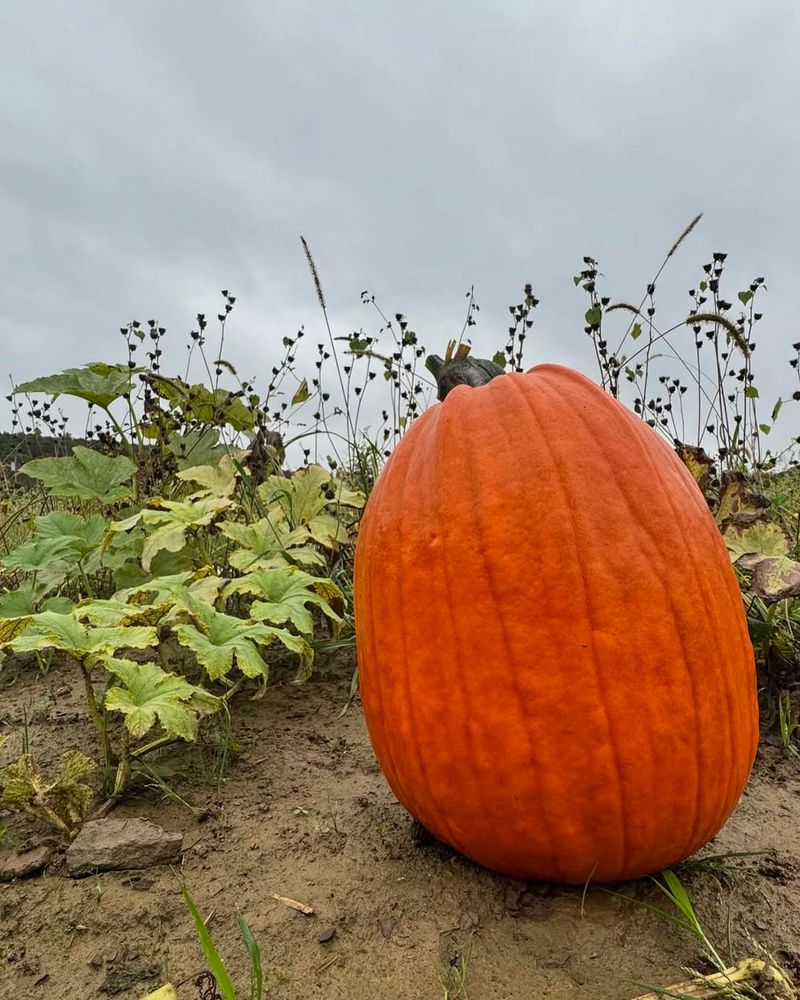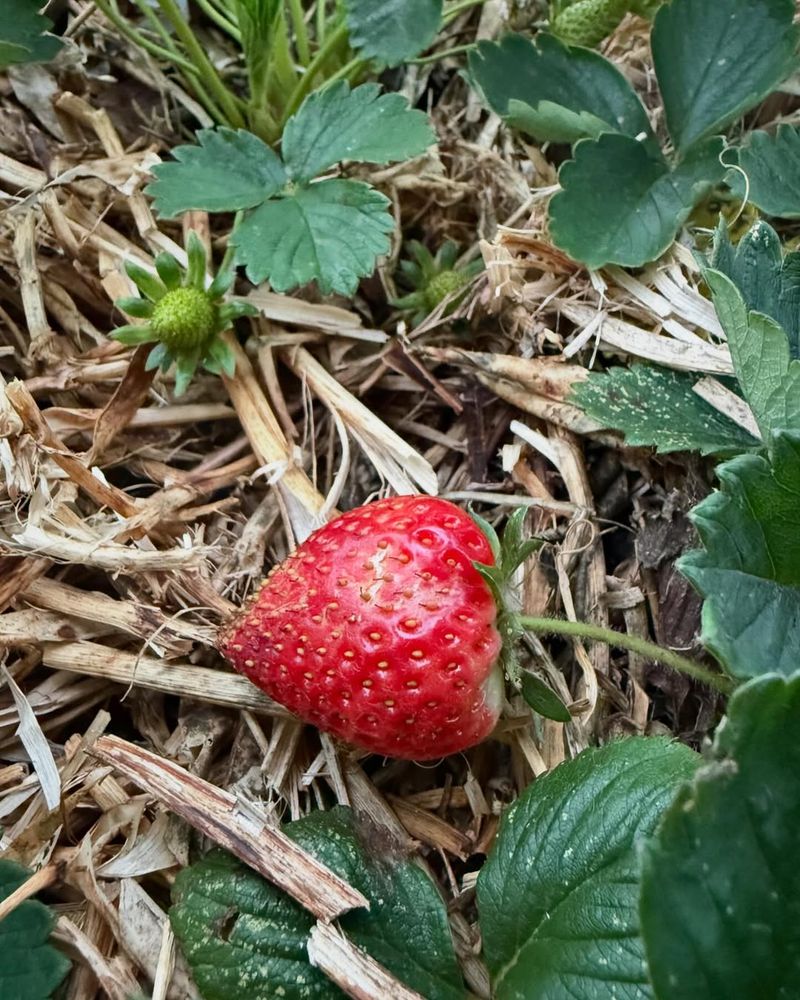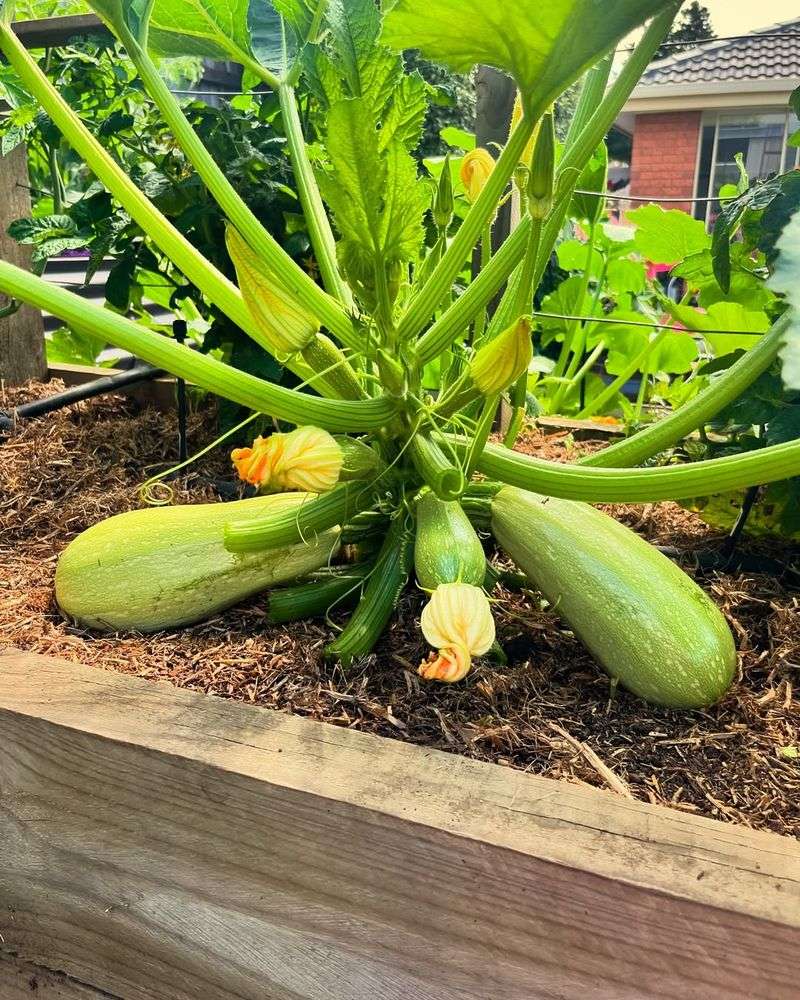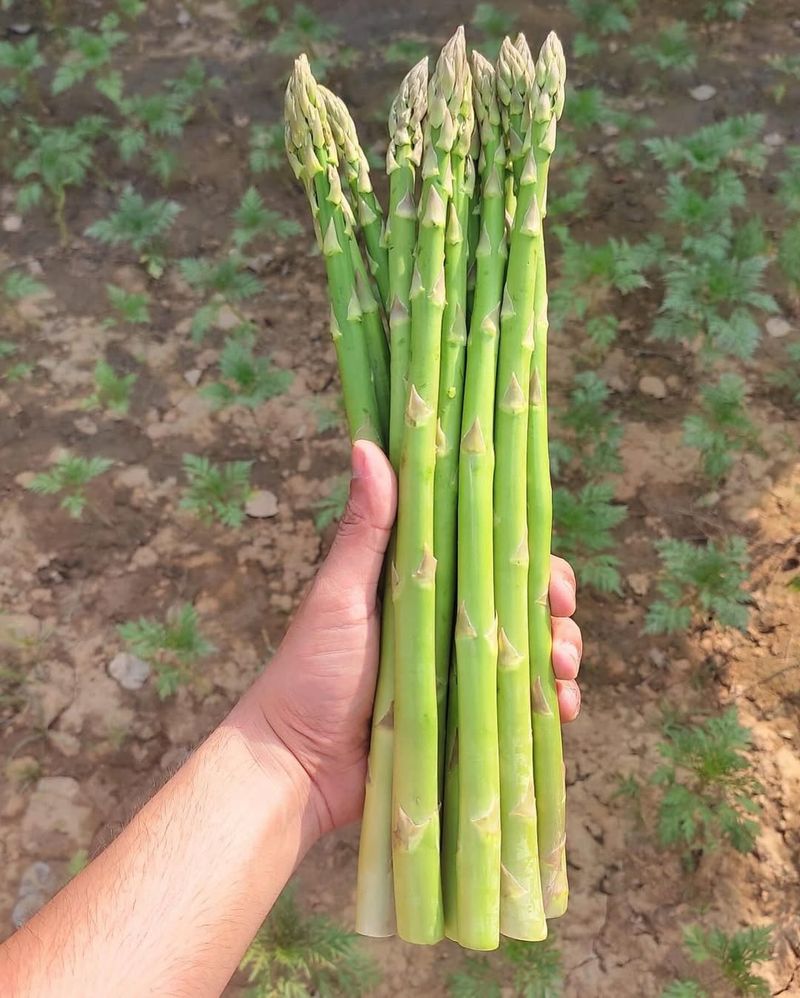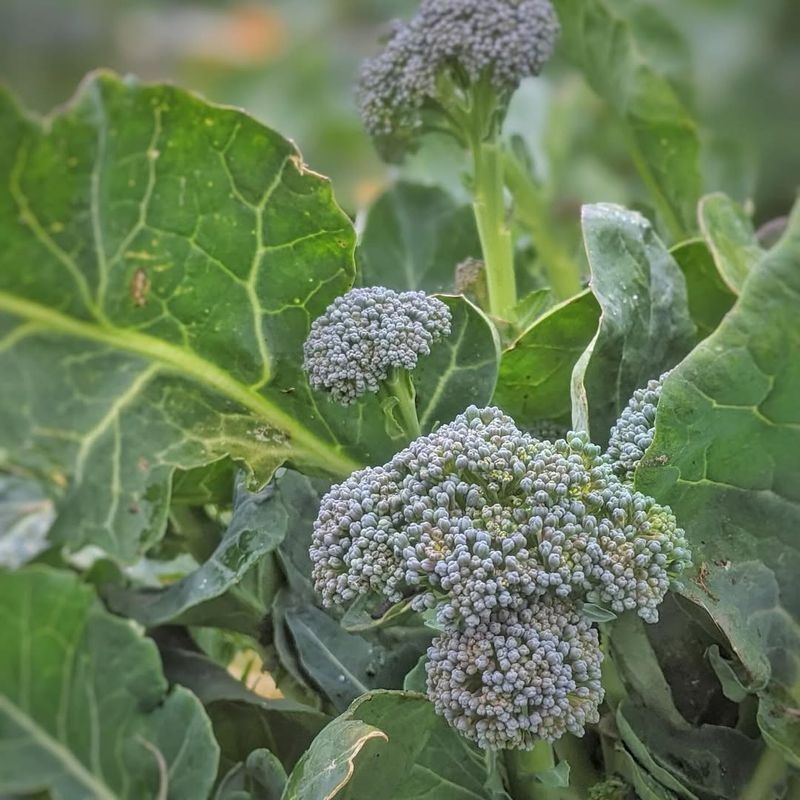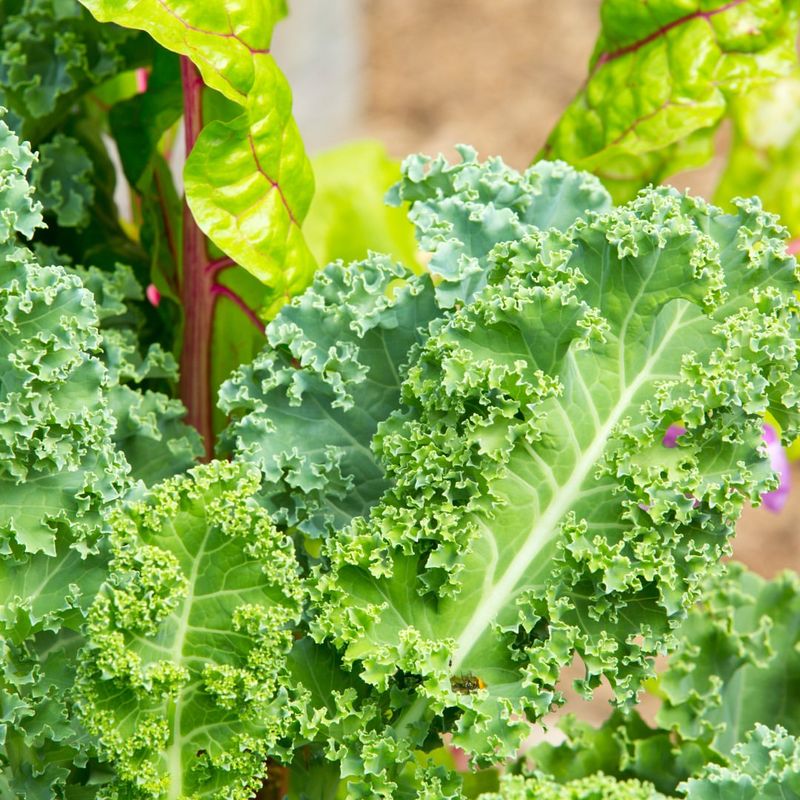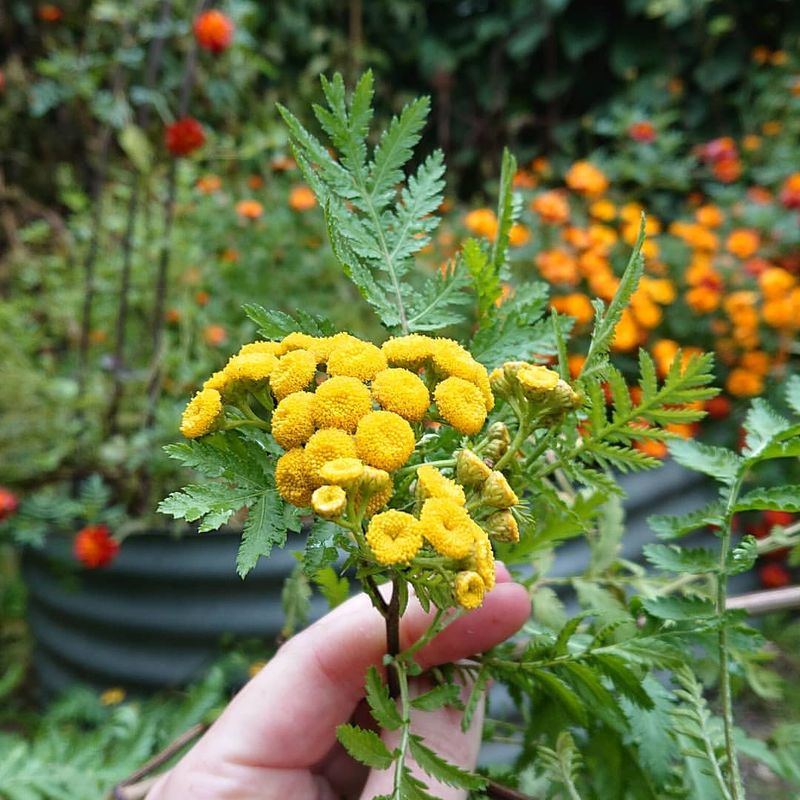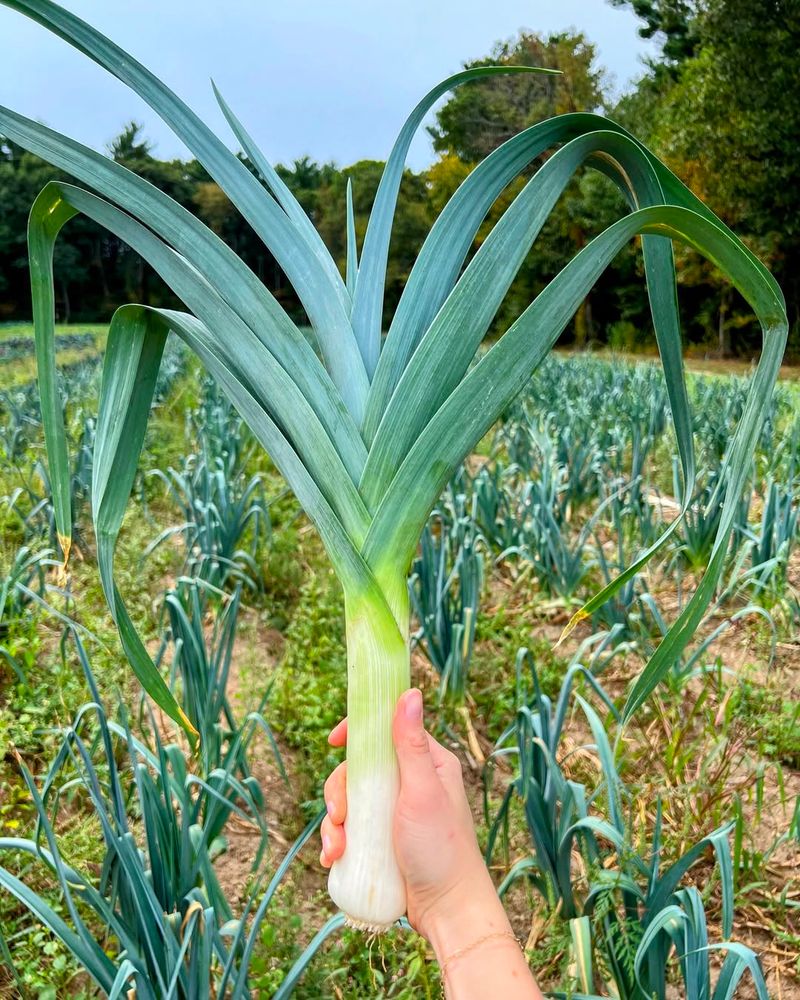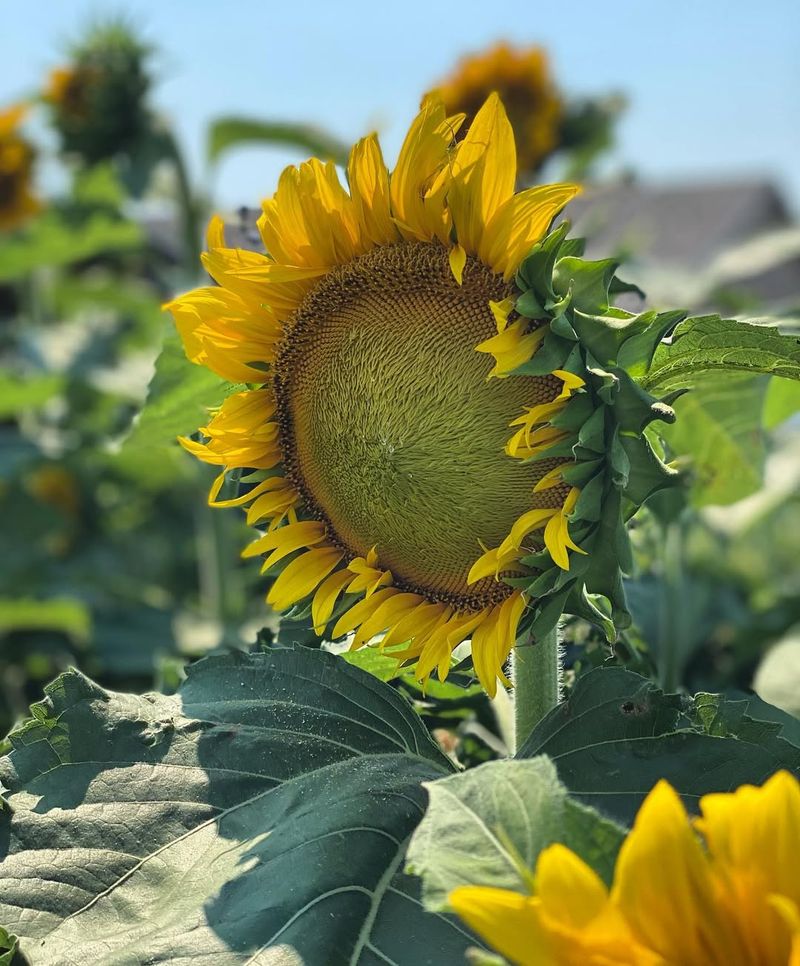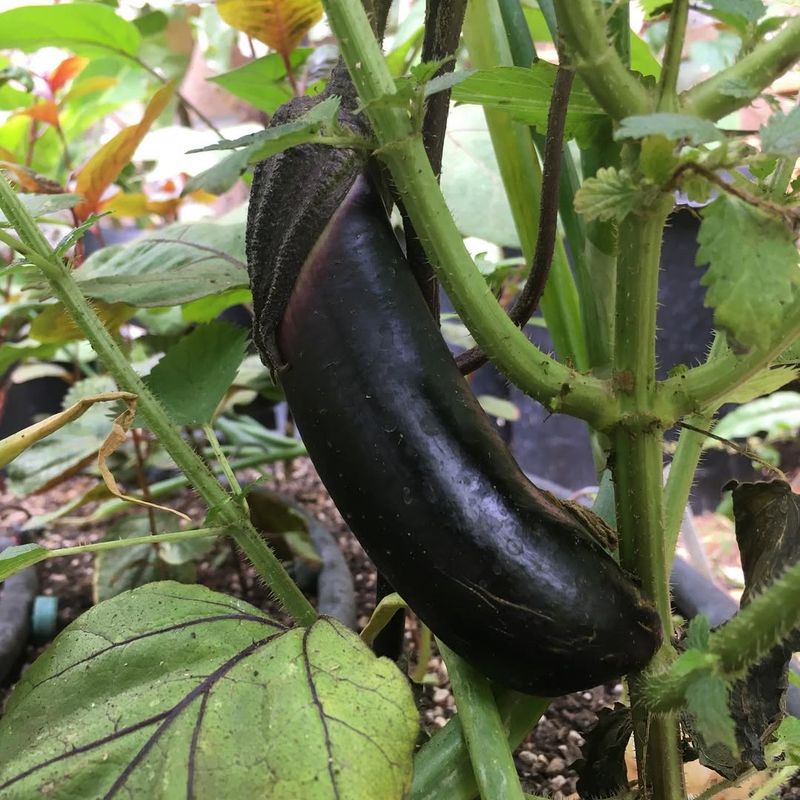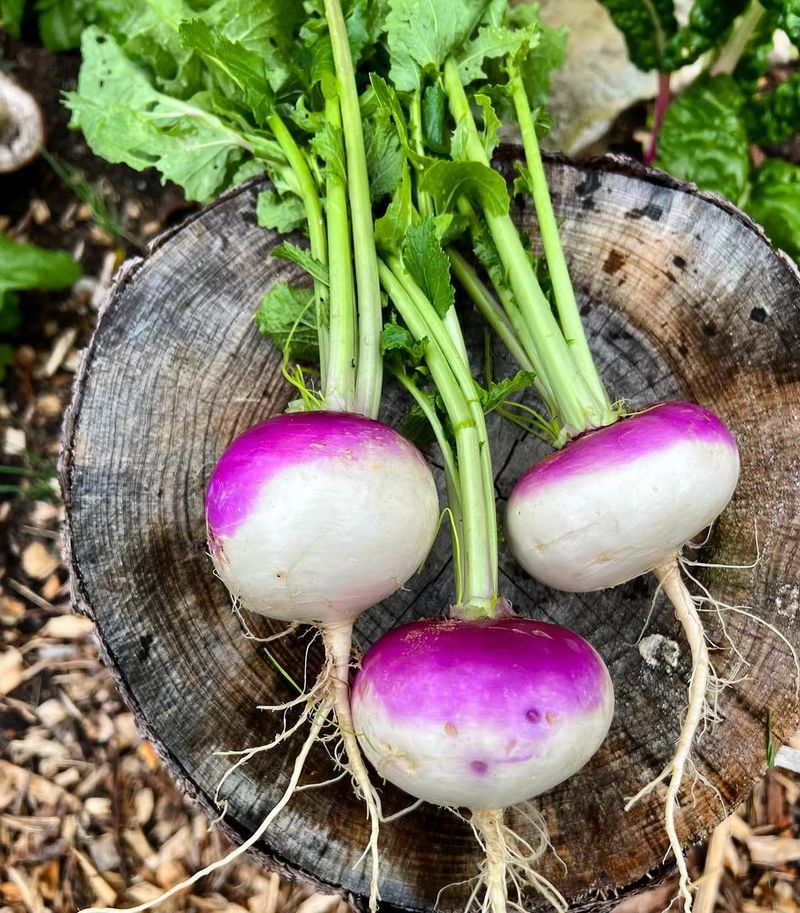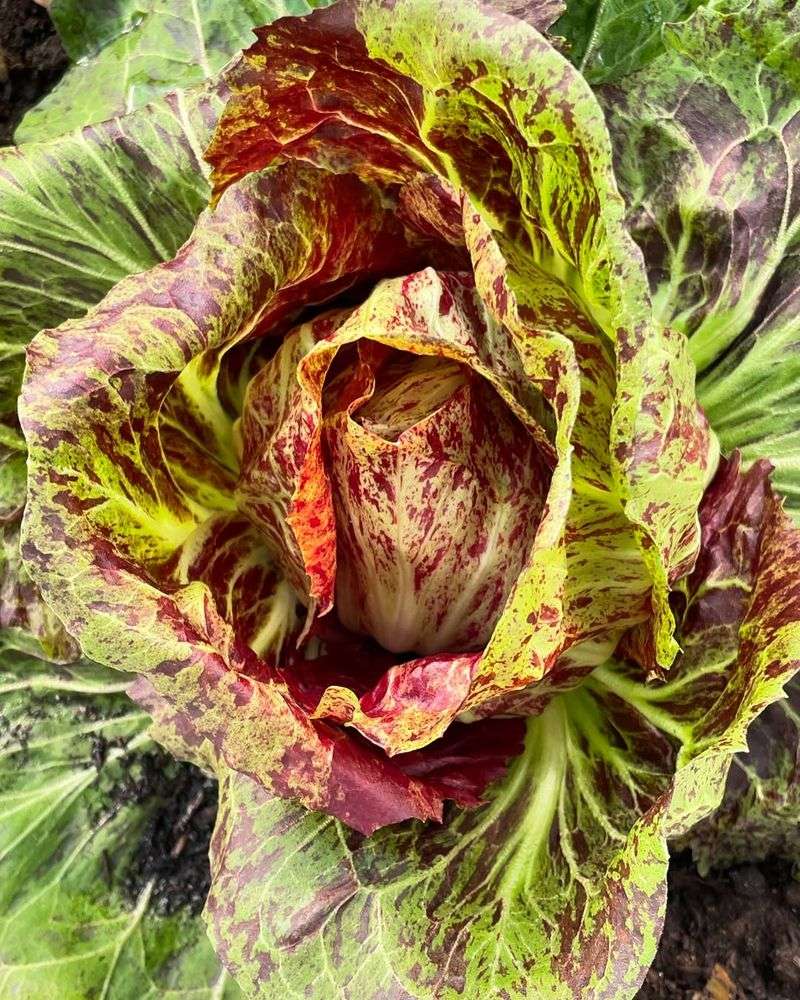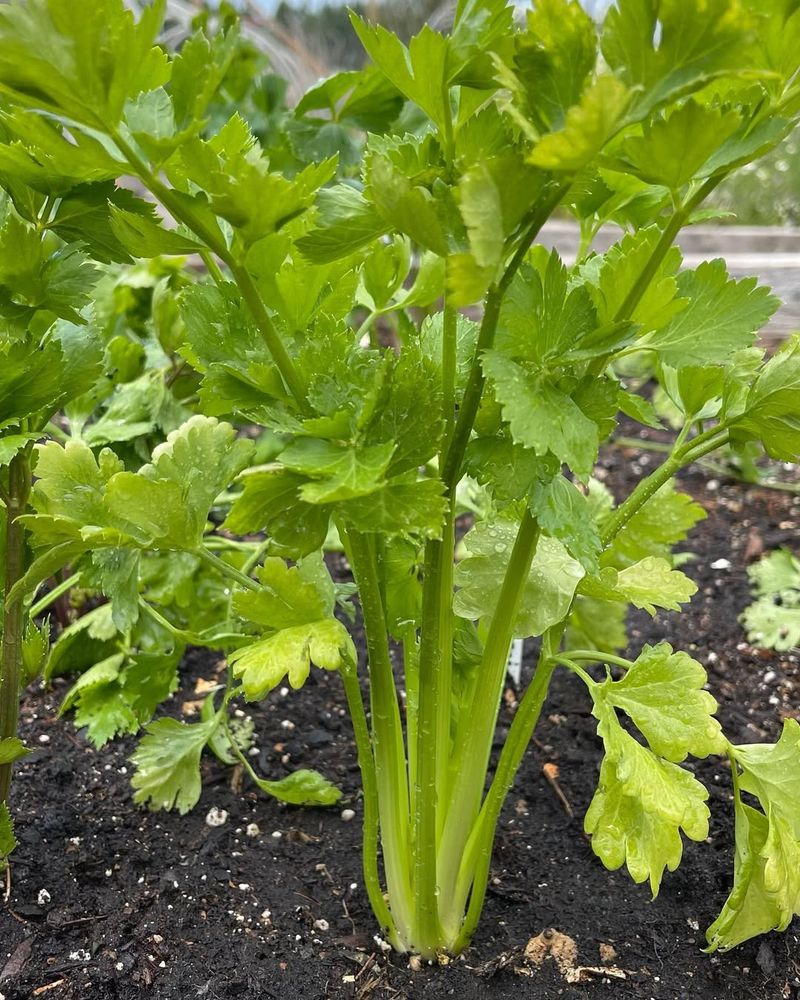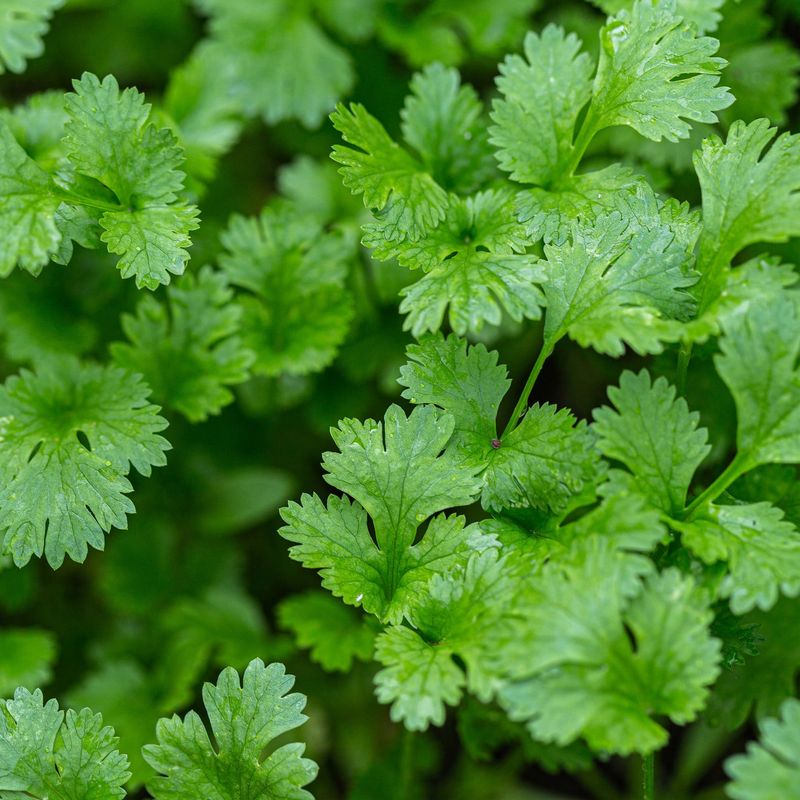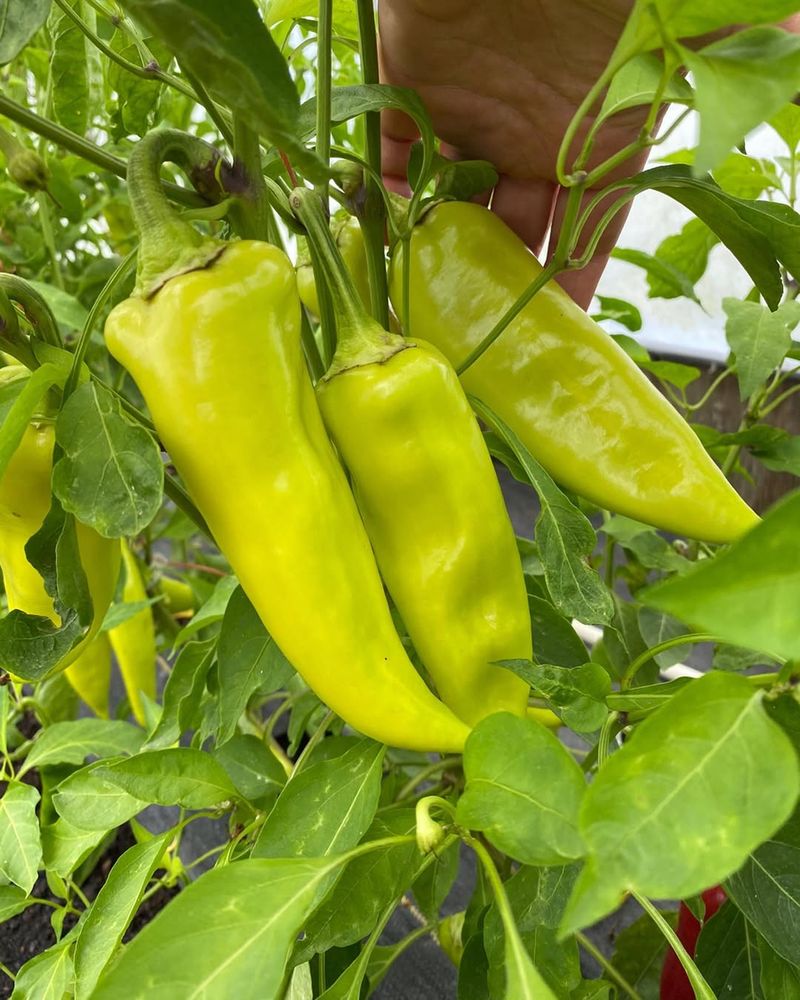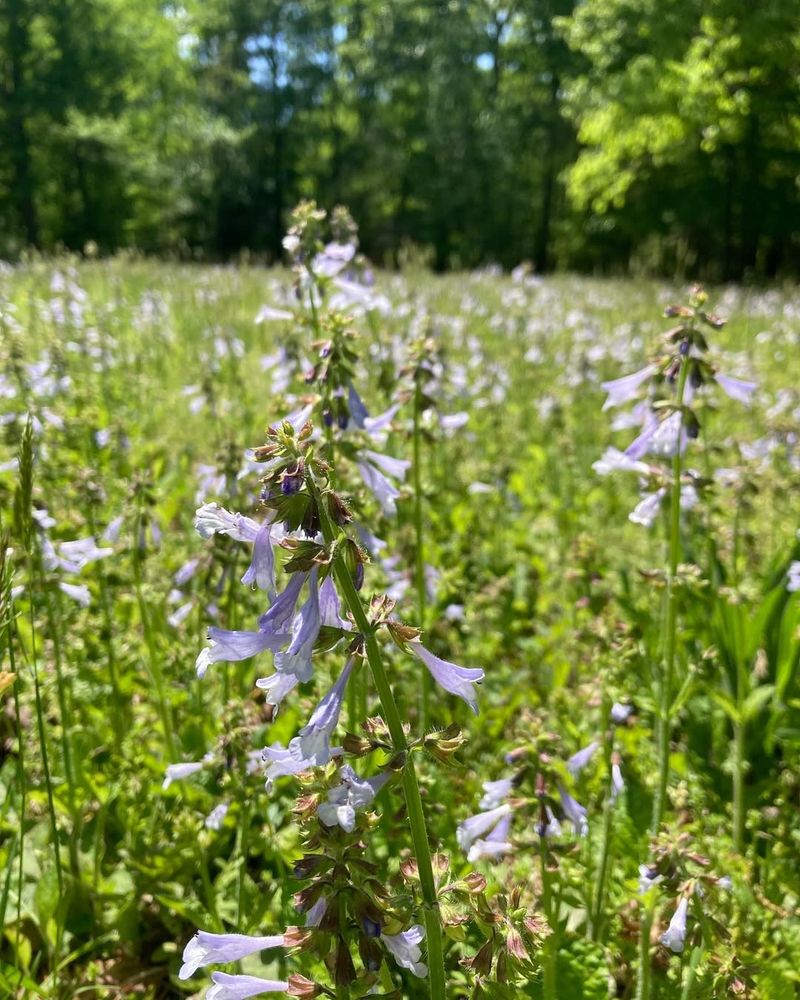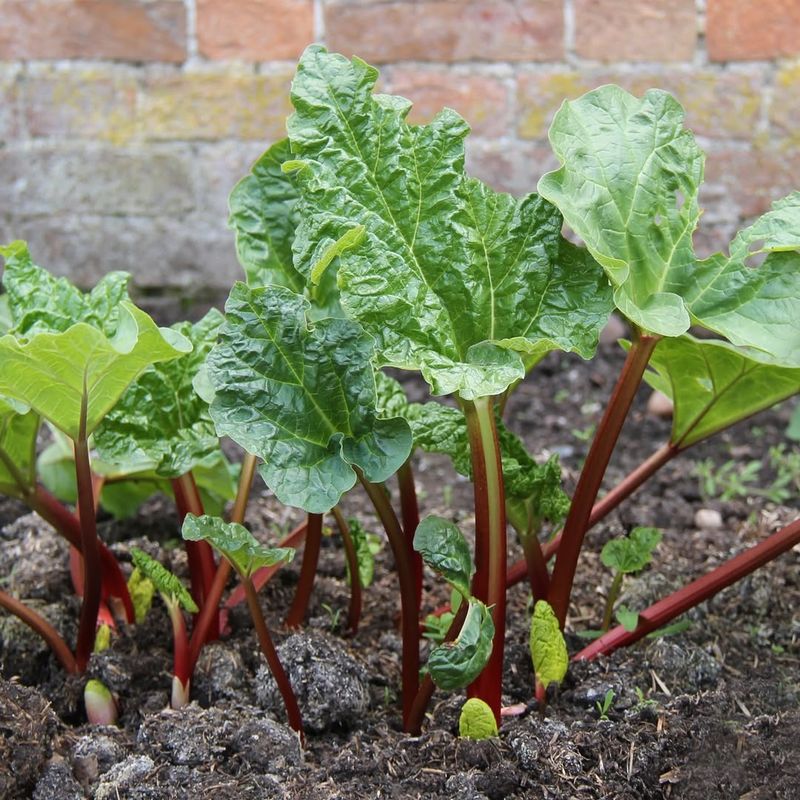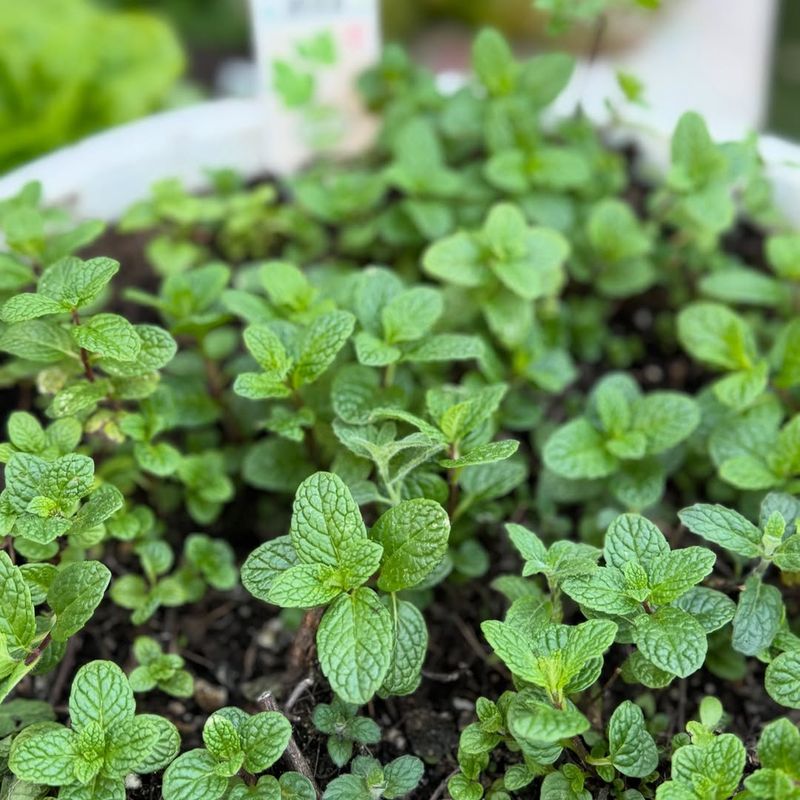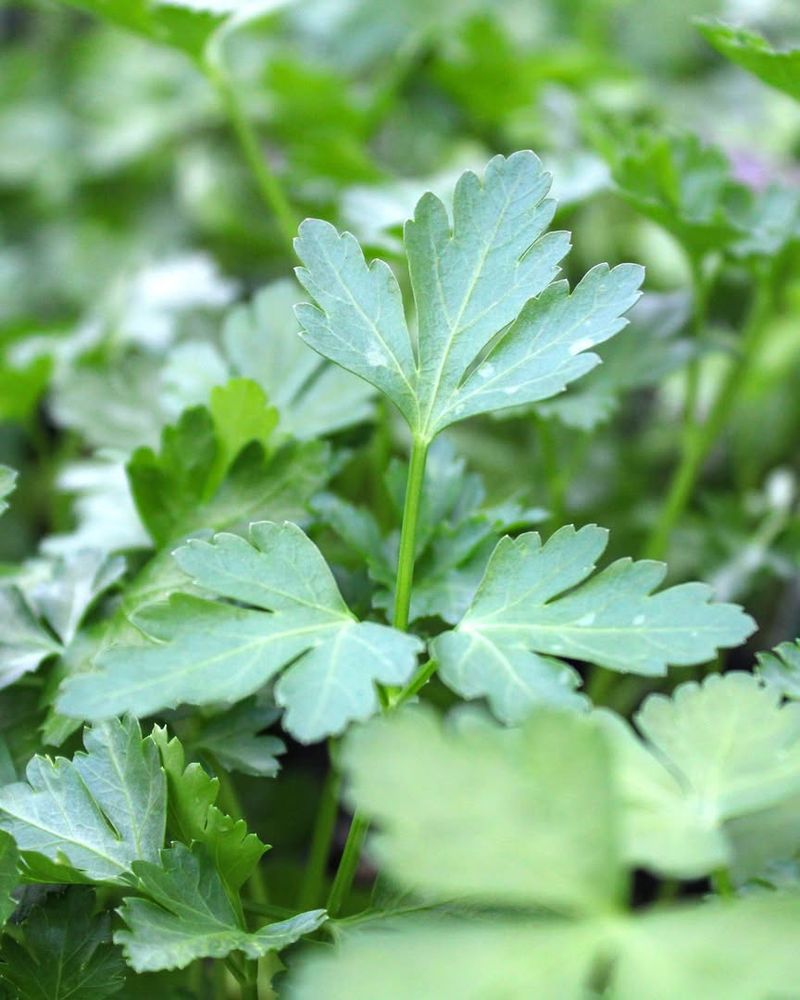April showers bring May flowers, but they also bring a bustling garden ready for some serious teamwork. Imagine your garden as a dance floor where plants groove together in perfect harmony. As I wander through my rows of greens and blooms, I find myself chuckling at how certain plant pairs just can’t resist each other. It’s like a botanical rom-com out there! Whether you’re a gardening guru or a budding enthusiast, the art of companion planting can transform your garden into a fertile paradise. So grab your trowel, and let’s dig into these delightful duos that promise a flourishing April garden!
1. Tomato and Basil
Some pairs are just destined for greatness. Take the classic combo of tomatoes and basil, for instance. These two not only make magic in the kitchen but also in the garden.
Basil acts as a natural pest repellent, keeping tomato-loving critters at bay. Meanwhile, the tomato provides a bit of shade, creating a perfect microclimate for basil to thrive.
Their symbiotic relationship doesn’t end there; the basil enhances the flavor of tomatoes. It’s like a garden party where everyone benefits, and taste buds rejoice! This dynamic duo is sure to spice up your garden and your dinner plate.
2. Carrots and Onions
Some friendships are rooted in mutual protection. Carrots and onions offer each other a helping hand—or in this case, a helping root.
Onions release a scent that confuses carrot flies, while carrots keep onion flies away. It’s a win-win situation that results in healthier crops.
This olfactory partnership ensures that both veggies grow strong and unbothered. Think of them as the dynamic duo of the veggie patch, standing guard against garden pests, ensuring your harvest is bountiful and bug-free.
3. Beans and Corn
Old friends make the best partners. Beans and corn have been teaming up since ancient times, and for good reason. Corn provides sturdy stalks for beans to climb, saving space and adding vertical interest to your garden.
In return, beans fix nitrogen in the soil, enriching it for the corn. This symbiotic relationship boosts the growth of both plants.
It’s like a garden skyscraper, where each plant plays a unique role in supporting the other. This combination not only maximizes your garden space but also enhances soil fertility, making it a win-win situation.
4. Radishes and Cucumbers
When you pair radishes with cucumbers, you’re in for a treat. Radishes, with their quick-growing nature, act as a natural pest deterrent for cucumber beetles.
They mature quickly and leave space for cucumbers to follow, making the most out of your garden bed. This timing is crucial for a seamless growing experience.
It’s a relationship that celebrates efficient use of space. As the radishes make their exit, cucumbers take center stage, ensuring your garden is always in production mode. This partnership is all about timing and maximizing garden yields.
5. Lettuce and Chives
It’s all about flavor and function with lettuce and chives. Chives not only add a mild oniony flavor to your salads but also ward off pests that might fancy a bite of your lettuce.
Their strong scent acts as a natural deterrent, ensuring your lettuce remains untouched. Meanwhile, the lettuce provides a nice shady spot for chives to thrive.
This is a taste bud tango that keeps your garden pest-free while enhancing your culinary creations. It’s like having a garden bodyguard with a gourmet flair, proving that good things come in small, flavorful packages.
6. Peas and Spinach
Peas and spinach make an excellent pair, especially for spring planting. Peas climb, while spinach spreads below, making efficient use of vertical and horizontal space.
The peas enrich the soil with nitrogen, which spinach loves, promoting lush, green growth. This partnership is all about nourishing the soil and sharing nutrients.
It’s like a garden duo that dances around each other, each playing their part in a successful growing season. With peas and spinach, you’ll enjoy a garden that’s as productive as it is picturesque.
7. Cabbage and Dill
When cabbage meets dill, magic happens. Dill’s aromatic foliage attracts beneficial insects like ladybugs and predatory wasps, which help keep cabbage pests in check.
Cabbage, in turn, provides partial shade, allowing dill to grow comfortably. This mutual support leads to healthier plants and a more vibrant garden.
Think of them as the dynamic duo of the garden, working together to ward off pests and promote growth. Their partnership ensures your greens are as safe as they are flavorful, making your garden a haven for beneficial insects.
8. Marigolds and Tomatoes
A splash of color and a touch of protection make marigolds and tomatoes an unbeatable team. Marigolds exude a natural insect-repelling fragrance that keeps pesky nematodes away from tomato roots.
Their cheery blooms also add a pop of color to your garden, brightening up your planting beds. Meanwhile, tomatoes offer support to marigolds in the form of shared space and soil nutrients.
Together, they create a vibrant, pest-free environment. It’s a partnership that delights the eyes while safeguarding your harvest, proving that beauty and functionality can indeed coexist in the garden.
9. Beets and Garlic
Some plant pairings are as surprising as they are effective. Beets and garlic might not seem an obvious match, but together they form a robust defense against pests.
Garlic’s potent aroma deters aphids and beetles, while beets thrive in the nutrient-rich soil that garlic helps maintain. This combination ensures a pest-free and productive garden.
It’s a flavor-packed partnership that keeps pests at bay and nutrients flowing. When you plant beets and garlic together, you’re in for a double dose of garden goodness, ensuring both your plants and your palate are satisfied.
10. Pumpkins and Nasturtiums
In the world of companion planting, pumpkins and nasturtiums are a match made in heaven. Nasturtiums act as a natural trap for aphids, attracting them away from pumpkins.
Their vibrant flowers also bring pollinators into the garden, benefiting pumpkins and other plants. Meanwhile, pumpkins provide ground cover, suppressing weeds and conserving soil moisture.
Together, they create a harmonious environment where beauty and productivity coexist. This partnership highlights the importance of diversity in your garden, where each plant plays a crucial role in the ecosystem, ensuring a fruitful harvest.
11. Strawberries and Borage
Who wouldn’t want a garden filled with strawberries and borage? Borage, with its star-shaped blue flowers, attracts pollinators, ensuring strawberries are well-pollinated.
The borage also deters pests that might damage strawberry plants, acting as a natural shield. In return, strawberries provide a soft ground cover, helping borage retain moisture.
This pairing not only boosts fruit production but also adds beauty to your garden. It’s a sweet and savory relationship that ensures your garden is as productive as it is picturesque, making every bite a celebration of nature’s bounty.
12. Zucchini and Oregano
Zucchini and oregano are a powerhouse duo in the garden. Oregano, with its aromatic leaves, wards off pests that might otherwise nibble on your zucchini.
The zucchini, in turn, provides ample ground cover, helping to suppress weeds and retain soil moisture. This symbiotic relationship ensures both plants thrive without competition.
It’s a garden alliance that’s as practical as it is flavorful, offering protection and productivity. When you plant zucchini and oregano together, you’re setting the stage for a successful growing season and a bountiful harvest that satisfies both gardener and gourmet.
13. Asparagus and Parsley
Some combinations are as delightful as they are beneficial. Asparagus and parsley, for instance, work together to enhance each other’s growth.
Parsley attracts beneficial insects, which help control pests that might target asparagus. Meanwhile, asparagus provides a vertical element, allowing parsley to flourish below.
It’s a partnership that adds both beauty and function to your garden. This duo ensures that your garden is not only productive but also a haven for helpful insects, making it a balanced ecosystem where every plant has its place and purpose.
14. Broccoli and Celery
Broccoli and celery might seem an unlikely pair, but together they form a robust duo. Celery’s strong scent deters pests that might otherwise target broccoli.
In return, broccoli provides partial shade, keeping the soil cool and moist for celery. This relationship ensures that both plants grow strong and healthy.
Together, they create a microclimate that benefits both plants, ensuring a bountiful harvest and a harmonious garden environment.
15. Kale and Nasturtiums
Kale and nasturtiums make a colorful and productive partnership. Nasturtiums act as a trap crop, luring aphids away from the kale.
Their bright flowers also attract pollinators, enhancing the garden’s biodiversity. Meanwhile, kale provides a leafy backdrop, creating a lush garden landscape.
This combination not only protects kale from pests but also beautifies your garden. It’s a partnership that celebrates the balance of beauty and function, ensuring that your garden is as delightful to look at as it is productive.
16. Tansy and Roses
When roses and tansy share the stage, it’s a performance worth applauding. Tansy, with its feathery foliage, repels pests that might damage roses.
Its vibrant yellow flowers also add a splash of color to the garden, creating a beautiful visual contrast. Roses, in turn, offer vertical interest and fragrance.
Together, they create a garden display that’s both stunning and functional. It’s a partnership that ensures your roses flourish, free from pests, while tansy’s beauty complements their elegance. This duo is a testament to the power of plant partnerships.
17. Leeks and Carrots
Leeks and carrots might not appear to have much in common, but their companionship is based on mutual protection. Leeks deter carrot flies, while carrots keep leek moths at bay.
Their combined defenses lead to healthier plants and a more productive garden. This partnership is a classic example of how plants can work together for mutual benefit.
It’s a friendship that keeps pests guessing, ensuring your harvest is as plentiful as it is pest-free. When you plant leeks and carrots together, you’re investing in a garden that’s both protected and productive.
18. Sunflowers and Cucumbers
Sunflowers and cucumbers make an impressive duo in the garden. Sunflowers offer sturdy support for cucumbers to climb, creating a vertical garden spectacle.
Their bright blooms also attract pollinators, benefiting not just cucumbers but the entire garden. In return, cucumbers help shade the sunflower’s base, preserving soil moisture.
This partnership is all about support and sustenance, ensuring both plants thrive. It’s a relationship that highlights the power of teamwork in the garden, where each plant plays a role in the other’s success, leading to a bountiful and beautiful harvest.
19. Eggplants and Amaranth
Eggplants and amaranth form a striking pair, both visually and functionally. Amaranth attracts beneficial insects that help control pests targeting eggplants.
Meanwhile, eggplants offer shade, helping amaranth conserve moisture. This partnership ensures both plants grow strong and healthy.
It’s a combination that brings both beauty and balance to your garden, with striking foliage and practical benefits. When you plant eggplants and amaranth together, you’re cultivating a garden that’s as visually stunning as it is productive, ensuring a successful growing season.
20. Turnips and Peas
Turnips and peas are a match made in garden heaven. Peas enrich the soil with nitrogen, which turnips love, promoting lush growth.
The turnips, in turn, provide ground cover, helping to suppress weeds and retain moisture. This combination is all about soil enhancement and efficient use of space.
It’s a garden friendship that ensures both plants thrive, leading to a bountiful harvest. Together, turnips and peas create a productive garden environment, making it a win-win for both plants and gardeners alike.
21. Radicchio and Thyme
Radicchio and thyme form a flavorful and functional partnership. Thyme, with its aromatic leaves, repels pests that might otherwise target radicchio.
The radicchio, in turn, provides a partial shade, helping thyme retain moisture. This relationship is all about protection and sharing resources.
It’s a garden duo that highlights the importance of fragrance and function, ensuring both plants grow strong and healthy. When you plant radicchio and thyme together, you’re investing in a garden that’s both protected and productive, offering a rich palette of flavors and colors.
22. Celery and Leeks
Celery and leeks form a partnership that’s all about mutual protection. Their combined scents confuse pests, keeping your garden free from unwanted visitors.
Leeks provide vertical interest, while celery offers a robust ground cover. This relationship leads to a more productive and pest-resistant garden.
It’s a friendship that thrives on shared defenses, ensuring both plants grow strong and healthy. Together, celery and leeks create a garden that stands strong against pests, making it a haven for healthy growth and bountiful harvests.
23. Cilantro and Spinach
Cilantro and spinach make an excellent team in the garden. Cilantro attracts beneficial insects that help control pests targeting spinach.
The spinach, in turn, provides a lush ground cover, helping cilantro retain moisture and thrive. This partnership is all about mutual aid and shared resources.
It’s a relationship that enhances both flavor and function, ensuring your garden is as productive as it is pest-free. When you plant cilantro and spinach together, you’re cultivating a garden that’s as rich in taste as it is in texture, offering a fresh and flavorful harvest.
24. Lavender and Cabbage
Lavender and cabbage might seem like an odd couple, but their partnership is based on protection and productivity. Lavender’s aromatic flowers repel pests that might harm cabbage.
Meanwhile, the cabbage offers a leafy contrast, creating a beautiful garden display. This combination ensures a pest-free and visually appealing environment.
It’s a garden duo that blends beauty with practicality, keeping your cabbage safe while adding a fragrant flair. Together, lavender and cabbage create a harmonious garden space, where protection and aesthetics go hand in hand, ensuring a bountiful harvest.
25. Basil and Peppers
Basil and peppers are a spicy combination that benefits any garden. Basil’s aromatic leaves repel pests that might otherwise feast on your peppers.
In return, peppers provide a bit of shade, creating a microclimate that basil enjoys. This relationship enhances both plant growth and garden productivity.
It’s a partnership that combines both flavor and function, ensuring your garden is as productive as it is tasty. When you plant basil and peppers together, you’re cultivating a garden that’s as delightful to smell as it is to harvest, ensuring a flavorful growing season.
26. Cauliflower and Sage
Cauliflower and sage are a garden pair that offers both protection and flavor. Sage’s strong scent deters pests that might target cauliflower.
In return, cauliflower provides partial shade, helping sage conserve moisture. This combination leads to a healthier and more productive garden.
It’s a partnership that’s all about fragrance and function, ensuring both plants thrive. Together, cauliflower and sage create a garden environment that’s both beautiful and bountiful, offering a harvest that’s as rich in flavor as it is in variety.
27. Rhubarb and Onions
Rhubarb and onions might not be the most obvious duo, but their partnership is based on soil enhancement. Onions repel pests that might attack rhubarb, ensuring a healthy growth.
Meanwhile, rhubarb provides a leafy cover, helping onions retain moisture. This relationship ensures both plants thrive without competition.
It’s a garden friendship that celebrates both protection and productivity, ensuring a bountiful harvest. When you plant rhubarb and onions together, you’re investing in a garden that’s both pest-resistant and productive, offering a rich and flavorful bounty.
28. Mint and Cabbage
Mint and cabbage form a fragrant and functional partnership. Mint’s strong scent deters pests that might otherwise feast on cabbage.
Meanwhile, cabbage provides a leafy backdrop, creating a lush garden landscape. This combination ensures a pest-free and visually appealing environment.
It’s a garden duo that highlights both beauty and function, ensuring your cabbage remains safe while mint adds a fresh aroma. Together, mint and cabbage create a harmonious garden space, where protection and aesthetics go hand in hand, ensuring a bountiful harvest.
29. Parsley and Tomatoes
Parsley and tomatoes make a flavorful and protective pair in the garden. Parsley’s aromatic leaves deter pests that might target tomatoes.
In return, tomatoes provide a bit of shade, creating a microclimate where parsley thrives. This combination enhances both plant growth and garden productivity.
It’s a partnership that combines both flavor and function, ensuring your garden is as productive as it is tasty. When you plant parsley and tomatoes together, you’re cultivating a garden that’s as delightful to smell as it is to harvest, ensuring a successful growing season.

